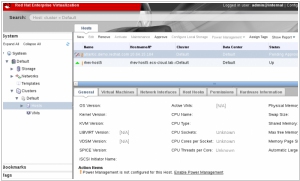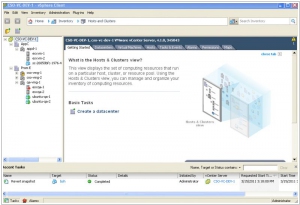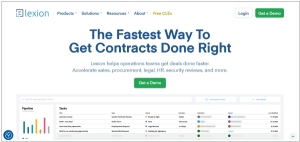Red Hat Virtualization vs VMware vSphere
July 25, 2023 | Author: Michael Stromann
7

Red Hat Virtualization is an open, software-defined platform that virtualizes Linux and Microsoft Windows workloads. Built on Red Hat Enterprise Linux and the Kernel-based Virtual Machine (KVM), it features management tools that virtualize resources, processes, and applications—giving you a stable foundation for a cloud-native and containerized future.
16

Build your own cloud infrastructure in your datacenter and remote sites on VMware vSphere the world’s leading server virtualization platform. Virtualize your x86 server resources and aggregate them into logical pools for allocation of multiple workloads. Get network services optimized for the virtual environment, along with simplified administration and management. Reduce the complexity of back-end storage systems and enable the most efficient storage utilization in cloud infrastructures.
Red Hat Virtualization and VMware vSphere are two leading virtualization platforms, each offering robust virtualization solutions, but they have significant differences in terms of their architecture, support models, and ecosystem. Red Hat Virtualization is based on open-source technologies, primarily KVM (Kernel-based Virtual Machine). It provides a cost-effective virtualization solution with advanced features such as live migration, high availability, and centralized management through the Red Hat Virtualization Manager. Red Hat Virtualization is designed for Linux-based environments and offers seamless integration with the Red Hat ecosystem, making it a preferred choice for organizations that prioritize open-source technologies and enterprise-grade support.
VMware vSphere, on the other hand, is a proprietary virtualization platform with a long-standing reputation in the industry. It leverages VMware's proprietary hypervisor technology, ESXi, which is known for its high performance and stability. vSphere provides a comprehensive suite of virtualization tools, including features like vMotion for live migration, Distributed Resource Scheduler (DRS) for automatic resource allocation, and vCenter Server for centralized management. VMware vSphere is well-suited for both Windows and Linux environments and is widely used by enterprises, making it a preferred choice for organizations seeking a mature and feature-rich virtualization solution.
Another key difference between Red Hat Virtualization and VMware vSphere is their support and licensing models. Red Hat Virtualization follows a subscription-based model, providing enterprise-level support and regular updates to ensure security and stability. On the other hand, VMware vSphere offers multiple licensing options, including vSphere Standard, vSphere Enterprise Plus, and more, each with varying levels of features and support. The choice between Red Hat Virtualization and VMware vSphere depends on the organization's specific virtualization needs, existing infrastructure, and preference for open-source technologies or proprietary solutions. Red Hat Virtualization may be more appealing to organizations seeking an open-source and cost-effective virtualization solution with strong Linux integration, while VMware vSphere is favored by enterprises that value a mature, feature-rich, and widely-used virtualization platform with various licensing options.
See also: Top 10 Virtualization platforms
VMware vSphere, on the other hand, is a proprietary virtualization platform with a long-standing reputation in the industry. It leverages VMware's proprietary hypervisor technology, ESXi, which is known for its high performance and stability. vSphere provides a comprehensive suite of virtualization tools, including features like vMotion for live migration, Distributed Resource Scheduler (DRS) for automatic resource allocation, and vCenter Server for centralized management. VMware vSphere is well-suited for both Windows and Linux environments and is widely used by enterprises, making it a preferred choice for organizations seeking a mature and feature-rich virtualization solution.
Another key difference between Red Hat Virtualization and VMware vSphere is their support and licensing models. Red Hat Virtualization follows a subscription-based model, providing enterprise-level support and regular updates to ensure security and stability. On the other hand, VMware vSphere offers multiple licensing options, including vSphere Standard, vSphere Enterprise Plus, and more, each with varying levels of features and support. The choice between Red Hat Virtualization and VMware vSphere depends on the organization's specific virtualization needs, existing infrastructure, and preference for open-source technologies or proprietary solutions. Red Hat Virtualization may be more appealing to organizations seeking an open-source and cost-effective virtualization solution with strong Linux integration, while VMware vSphere is favored by enterprises that value a mature, feature-rich, and widely-used virtualization platform with various licensing options.
See also: Top 10 Virtualization platforms



